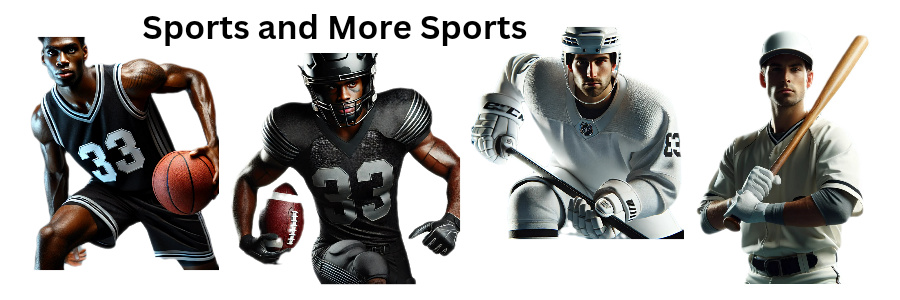Each week during the 2024-25 NBA season, we will take a deeper dive into some of the league’s biggest storylines in an attempt to determine whether trends are based more in fact or fiction moving forward.
Fact or Fiction: Something is seriously wrong with the NBA
I thought the discussion about “what is wrong with the NBA” was mainly driven by social media, where people who purportedly like basketball were spending the early part of this season searching for answers to a decline in television ratings, but the conversation reached the mainstream this week. Commissioner Adam Silver addressed concerns in Las Vegas, where NBA Cup participants were also asked about the health of the league, as “Inside the NBA” hosts Charles Barkley and Shaquille O’Neal floated theories.
“It’s frustrating to me, because all it is now is a 3-point shooting contest and a free-throw contest, and I don’t like it,” Barkley, arguably the NBA’s most influential commentator, said on “The Dan Patrick Show.” “They can get mad, but I don’t want to go see a 3-point shooting contest every night. That ain’t no fun.”
“It drives me f***ing crazy,” O’Neal added on his own podcast.
The increase in 3-point attempts is probably the most popular position among armchair analysts. Teams are attempting 37.6 per game — up from 35.1 last season, from 20 in 2012-13 and from 9.9 in 1993-94.
Even LeBron James — maybe the only person in the game whose voice holds more weight than Barkley’s — shoehorned his grievance into an answer about the latest All-Star Game format, telling reporters, “Our game, there’s a lot of f***ing 3s being shot. So it’s a bigger conversation than just the All-Star Game.”
I may be in the minority, but I do not understand the premise. Shooting is an important part of the game, maybe the most important, and an increased degree of difficulty — at a success rate that makes the NBA of the 1980s and early ’90s look unskilled — should not on its own explain why people may be turned off.
Was it better when teams were shooting 40.1% on 31.3 midrange jump shots per game in 1996-97, as far back as the NBA’s database goes? That figure is down to 9.8 a game (at a slightly higher success rate). All those long 2-pointers have been pushed beyond the arc, where players are making 35.9% of them. By the percentages, the difference in eras is marked by one more missed field goal per game (and more points).
But that is not even the case. The pace has increased from the height of the Michael Jordan era, when nobody was wondering what is wrong with the NBA. Field-goal attempts are up. Field-goal percentages are up. Points are up. Everything but midrange jumpers is up, including dunks. Over a 20-year period from the turn of the century to the current era, dunks increased by 35%, according to RunRepeat.com.
As Boston Celtics coach Joe Mazzulla, whose reigning champions attempt more 3s than any team ever has, asked of us this week, “Why in basketball is scoring up being an issue, as opposed to other sports?”
If the league’s skill level is higher than it ever has been — and I do not think there is any debate about that — and offense is at an all-time high, why then are we not talking about what is right with the NBA?
TV ratings, that is why. We discuss no other metric in regards to a sport’s popularity. And we do not even understand that. NBA viewership has actually outpaced the decline in overall TV ratings, according to Sports Media Watch. Even if we were to accept that this viewership issue is not actually a linear TV issue, basketball is being consumed more than ever before. No other league has a larger social media following.
“If you look at other data points, in terms of our business, for example, we’ve just come off the last two years of the highest attendance in the history of this league,” Silver said in his media availability prior to Tuesday’s NBA Cup championship game. “We’re at a point where our social media audience is at the highest of any league and continuing to grow exponentially, so it’s not a lack of interest in this game.”
Every slate of games produces countless highlights and quotes and storylines — all the drama we enjoy about the sport — easily packaged into clips consumed by millions of people on social media. According to the NBA, the league has generated 10 billion video views on its social channels this season, a record pace. Viewership there is up 90% from five years ago. League Pass enrollment is at record levels, up 8%.
The NBA’s cable TV ratings are down 13% across all properties, per Nielsen. But consider this: A Nov. 29 game between the Oklahoma City Thunder and Los Angeles Lakers drew 1.14 million viewers to ESPN, as the game’s recap on Instagram generated another 5.2 million views. The NBA has 182.4 million followers across Instagram, X, TikTok and YouTube. The NFL, MLB and NHL have 153.4 million followers combined.
Not convinced that this challenges the notion that the NBA is losing its audience? Well, it convinced the league’s broadcast partners, who ponied up $77 billion for the rights to air games through the 2035-36 season, triple the NBA’s last media deal. Everything but TV ratings is telling us the league is thriving.
So why are we so concerned with TV ratings when they are of little concern to the people who make decisions based on them and will not be for another decade, when Stephen Curry will be 48 years old?
Because we have thoughts, that is why, and we must share them. There are not enough American-born superstars, and the ones that remain are force-fed to us at advanced ages. Player empowerment. Load management. Go down the list, and you will not find a real basketball problem, other than “too many 3s.”
If you want to go back to 20 years ago, when scores were in the 70s and 80s, or 40 years ago, when the paint was packed with … everyone, I will not be joining you. I saw it. It was cool in its way. So too is basketball today. It is actually better. If you do not like the highest degree of skill we have ever seen, which has maximized the point of the game — to score — then maybe you just do not like basketball.
And that is fine. But those of us who do are tired of listening to reasons why you do not. The negativity does nothing but feed back into a loop about what is wrong with the NBA when the problem it addresses is not even a problem and will not be for another three presidential terms. To what end? Who are we trying to convince that basketball is cool? And why? If anything a discussion about what is right with the NBA will draw more viewers to what is already a widely consumed product full of fascinating narratives.
As refreshing as it was for Kevin Durant to highlight reality vs. perception on this subject, he too fed a negative news cycle, telling reporters this week, “I hate [the new All-Star Game format]. Absolutely hate it.“
This is, for the most part, a separate conversation. The league implemented another new All-Star Game format because players stopped trying in the exhibition. They have been too busy complaining about it. But the end result is the same: The game’s participants are undermining the product they are selling. If we keep telling everyone there is something wrong with the NBA, they will believe it, even if it is untrue.
The Celtics are defending the championship. The Lakers are led by James, who is doing things at age 40 no one thought possible. Nikola Jokić might be having the greatest season ever. Giannis Antetokounmpo is gunning for a third MVP. The pool of candidates for the award is as deep as it has ever been. Anthony Edwards, Shai Gilgeous-Alexander and a cast of young characters are trying to wrest the league’s torch from its establishment superstars. A 7-foot-5 unicorn is developing behind them. Cooper Flagg is coming.
There is a ton to love about the NBA.
But you do not hear that from the people who purportedly like the sport the most. That this discussion has reached the fervor it has — leading sports debate shows and populating trending topics — in a weird way supports the notion that the NBA is as popular as ever. It is OK to think basketball is good and fun, and you do not need TV ratings — the very thing that is lining the league’s pockets — to remind you of it.
Determination: Fiction. There is nothing seriously wrong with the NBA.
This post was originally published on this site be sure to check out more of their content.









